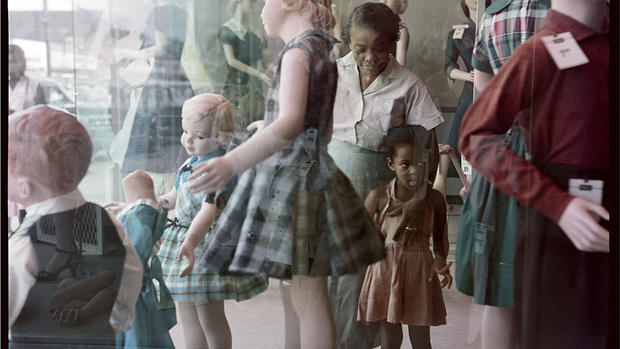Rediscovering a master photographer's courageous work
Gordon Parks' courageous photography helped awaken America at the dawn of the civil rights era. He was a master at portraying people from every walk of life. For years, some of Parks' most important early work seemed lost, but now a new generation of Americans can see it for themselves, CBS News' Anthony Mason reports.
In the summer of 1956, in the aftermath of the Montgomery bus boycotts, Life magazine sent a photographer to Alabama for an essay on segregation. The man who took these pictures was Parks, Life's first black photographer, who saw his camera as a weapon.
"I see a poor child, distraught mother; it's not important in that particular moment that I express my feelings, but it's important that I let the world know what they are thinking and what they are going through," Parks told CBS' "Sunday Morning" in 1982. "And so I become an instrument for them. I think that's what the camera does. It serves a purpose."
In September of 1956, Life published 26 of Parks' photographs. While he later exhibited some of the shots, the bulk of Parks' work from that assignment was thought to have been lost, until a few years ago.
Six years after his death, archivists for the Gordon Parks Foundation came upon a box wrapped in tape. The foundation's executive director, Peter W. Kunhardt, said there were more than 200 color slides inside.
"This photograph of this classroom, which is just a black classroom, looks like something you'd see in the 1800s," Kunhardt said. "To think that this was 1956."
The foundation made prints. The photographs, many never seen before, are now on exhibition at the High Museum in Atlanta and at the foundation's new headquarters in Pleasantville, New York.
"So this is Andrea Tanner and her granddaughter looking into a white clothing store and sort of the life she doesn't have," Kunhardt said. "And you know Gordon really didn't stage these pictures. He would follow them around and just observe what they were doing."
They are images from an ordinary day in the segregated South: Children peering through a fence at a forbidden playground, a mailman in a pith helmet reading mail to a couple because they are illiterate, and a woman and child outside an Alabama movie theater.
"This photograph did not appear in Life magazine," Kunhardt said. "And turned out to be one of Gordon's most iconic civil rights photographs."
The woman in the picture, Joanne Wilson, went on to become a respected high school teacher of government and economics. In 2013, she was honored at the Gordon Parks Foundation's annual dinner.
"I am so proud of his work," Wilson said.
Wilson died the following year.
In his lifetime, Parks became one of the world's most acclaimed photographers. He shot the beautiful, the gifted, the powerful and the poor with equal empathy.
"I don't have time just to make pretty pictures," Parks told "Sunday Morning." "I would think the stories that did that touched people, touched people and helped lives. Those are the ones that I'd most wanted to be remembered by."
